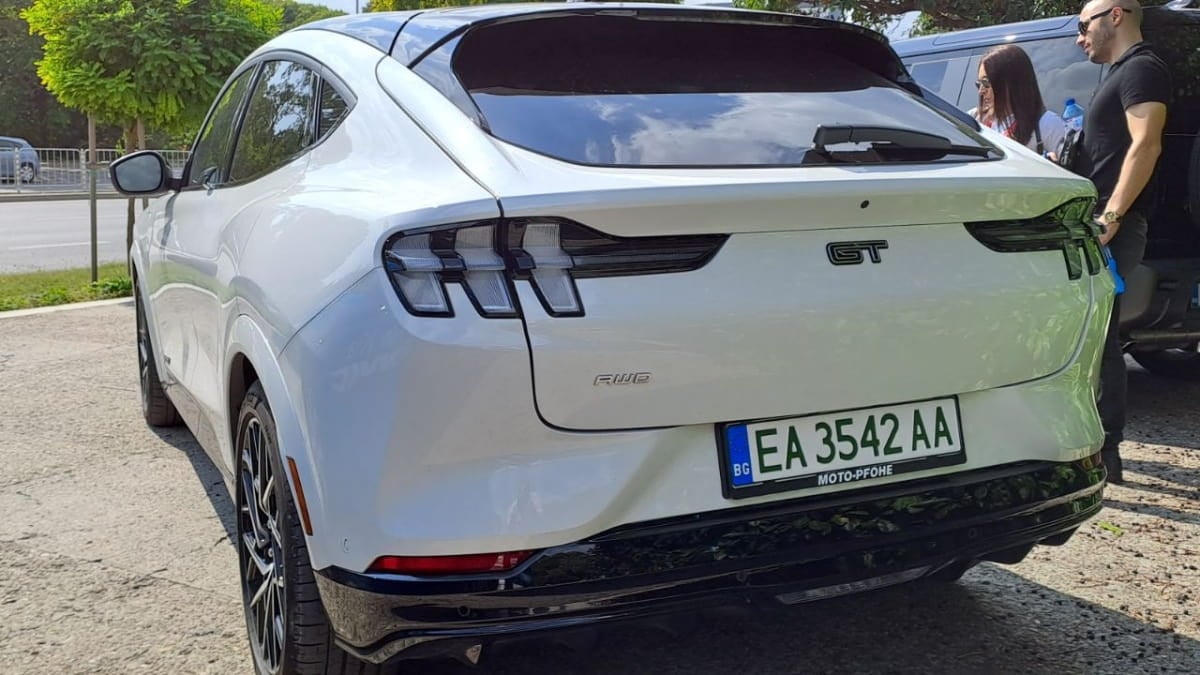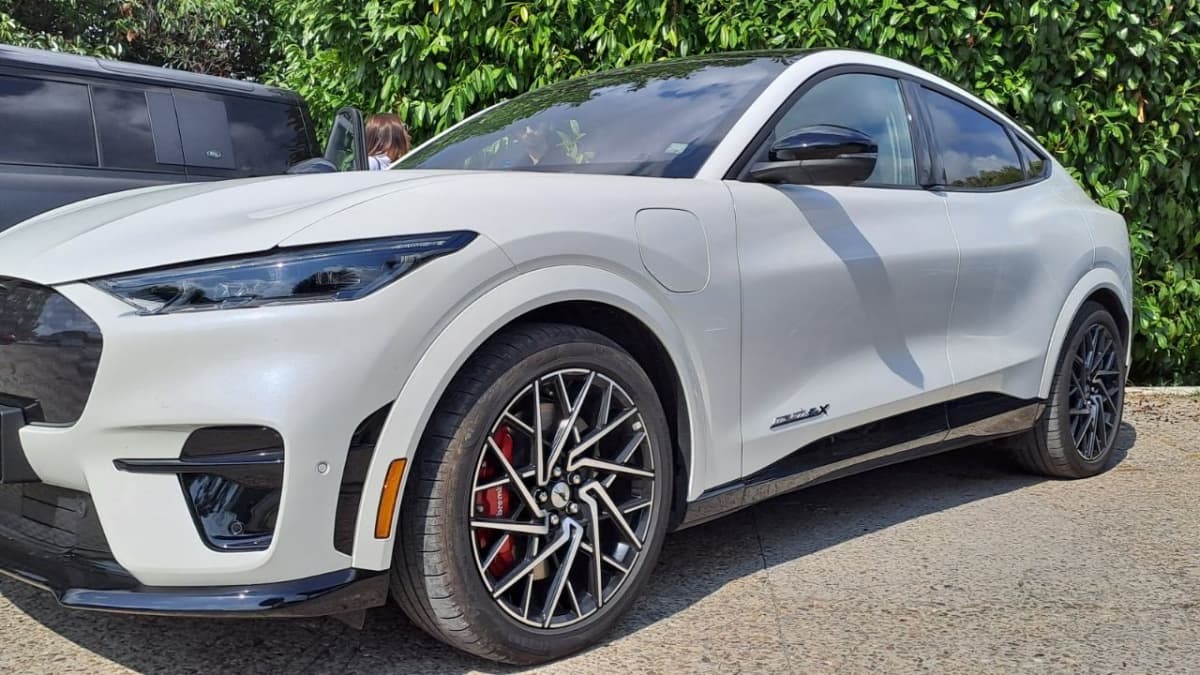I drove the Ford Mustang Mach-E GT and now that Dodge brought out the Charger Daytona EV, I have changed my mind.
In 2020, Ford did something that was viewed by car enthusiasts as obscene – slapping the Mustang nameplate on a four-door EV model. While the future of the combustion-powered Ford Mustang may, indeed, feature electrification and four doors – similar to what we hear the next Camaro will be – I decided to take another look at the all-electric Ford Mustang Mach-E GT.
I was never really fond of the lesser variants, nor most EVs for that matter, but after driving the most powerful version of the electric Mustang, I am ready to put things into a different context. Now that Dodge also turned one of its most iconic names – the Charger (and Daytona) into an EV, I can look at the Mach-E GT with new eyes.
Will the Mustang Mach-E still make sense when the Charger EV arrives?

Ford guys will always go Ford, while MOPAR guys will, naturally, gravitate to any iconic nameplate from Dodge and Chrysler. For those who are willing to go in either camp, things are a bit more complex.
The Mustang Mach-E GT is, technically, a performance e-SUV, but don't let that fool you into thinking there are serious off-road capabilities. This thing is road-bound. Meanwhile, the Charger stays truer to its Muscle car roots with a neo-retro styling reminiscent of the 1968 model.
Price-wise, the Ford Mustang Mach-E GT starts at $55,890 with the GT Performance sitting at $61,885 and the GT Bronze at $62,885.
The Dodge Charger Daytona EV will be in the $50,000 to $60,000, and from what we know so far, there will be two trims – R/T and Scat Pack. The main point is both models will be competitive in terms of pricing.
What it is to drive the Ford Mustang Mach-E GT
At 4,952 pounds, the Ford Mustang Mach-E GT is not a light car. No EV truly is, unless we are talking about a dedicated sports car platform. Also, all Mach-E GT models come with all-wheel drive, courtesy of two electric motors – one per axle.
Since I drove the base Mach-E GT, my test car did not come with the adaptive MagneRide suspension, which is arguably, the most important bit of kit in the GT Performance trim. Too bad it cannot be ordered separately.
Even so, the Mach-E GT felt much sportier than other EVs I have driven, particularly the Jaguar I-Pace EV400, which gravitates more towards the luxury aspect of motoring.
Even without the MagneRide suspension, my Mach-E GT test car handled confidently and tackled corners with ease. Granted, the ride is more on the sporty side, without the ability to make it softer, but it isn't jarring. For GT models, the ride height is also 10 mm lower.
The Mach-E GT didn't feel as heavy as 4,952 pounds. Of course, instant torque plays a huge role there. Speaking of performance, the 480 horsepower and 600 pound-feet contribute to a 4.2-second 0-60 mph time. From stoplight to stoplight, the American EV accelerates like mad.
Unbridled mode is where the Mach-E GT fun factor goes to the max
Unbridled mode is, essentially, Sport mode for the Mustang Mach-E. The AWD system becomes rear-biased, the steering becomes heavier, and the brakes become sharper, at the cost of regenerative braking. In short, Unbridled mode recalibrates the software for performance driving. Sadly, 80 percent of my driving was in the city, so I got limited opportunities to experience Unbridled mode.
In true EV fashion, acceleration dies down at speeds above 80 mph, until eventually, the Mustang Mach-E GT reaches its limited top speed of 124 mph, provided the battery isn't drained too much, at which point the top speed governor would drop down to 100 mph. All Ford Mustang Mach-E GT models come with active battery cooling.
2024 Ford Mustang Mach-E GT range and economy
The Mach-E GT achieves 90 eMPG combined with 95 in the city and 85 on the highway, according to the EPA standard. That's better than the Jaguar I-Pace EV400's 76 eMPG combined, but not as good as the Tesla Model Y Performance's combined 105 eMPG. Average energy consumption is rated at 37 kWh/ 100 miles.
Meanwhile, the 97.8-kWh Lithium-ion battery provides an acceptable, 280-mile range on a single charge. With rapid charging, the Mach-E GT battery needs 36 minutes to charge to 80 percent, which is good for 230 miles. That's roughly 10 minutes quicker than what the 2023 model year needed.
The Ford Mustang Mach-E Interior is minimalist yet sporty
Almost all, but the most luxurious EVs feature minimalist interiors, revolving around large center screens. The Mustang Mach-E is no exception. The focal point is the 15.5-inch infotainment touchscreen through which almost all of the car's functions are accessed.
You also have the option to tilt the screen 45 degrees. It's also big and responsive, highly customizable, and able to incorporate multiple features at once. There is also a dedicated driver instrument cluster, which is just another screen that shows you the driver essentials, like speed, battery charge, consumption, etc.
I am not a fan of the rotating "shifter” dial, but Ford does it on many of its models now so, it is what it is. Being the Mach-E GT, this version of the all-electric Mustang comes with sport seats and a “GT” logo on the center armrest. Surprisingly, the second–row seats are quite roomy even for taller people, despite the sloping roofline.
Since I don't want this to be a full-blown car review, I will conclude. My impressions are that Ford have been playing it safe with the design of the Mustang Mach-E. I appreciate the classic Mustang design cues like the tri-bar taillights, but the car's philosophy isn't that far from what we get from the Tesla Model Y. I can't blame Ford, given Tesla's success with its compact SUV model.
While it's hard to beat the Tesla Model T in terms of bang for the buck, the Ford Mustang Mach-E GT is well-positioned in the EV world as a sportier alternative to other electric SUVs in the segment.
About the author
Dimitar Angelov's automotive interests made him an expert in a wide variety of vehicles. Japanese brands like Toyota are closest to his heart, although performance cars in general are his favorite segment, which is why he is constantly on the lookout for the best deals on the market. Dimitar Angelov's car passion and knack for the written word led him to complete a Master of Arts in Media and Communications, and classic car restoration. Dim is happy to get behind the wheel of any car and share his impressions. You can follow Dimitar on X, Linked-in, Instagram, and Facebook.
Image source: Dimitar Angelov





